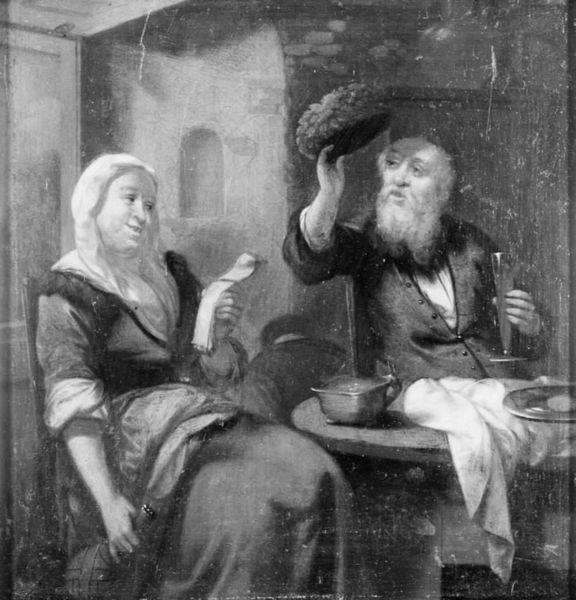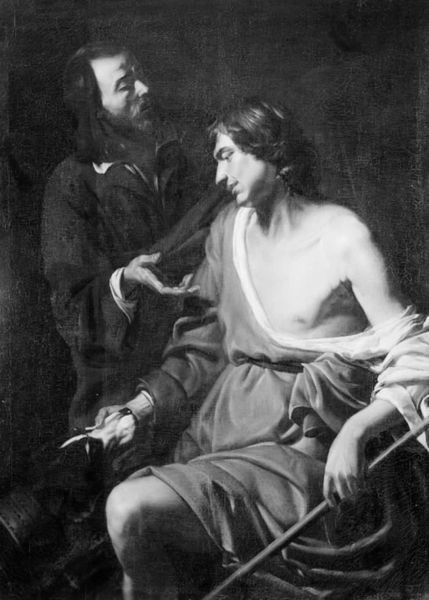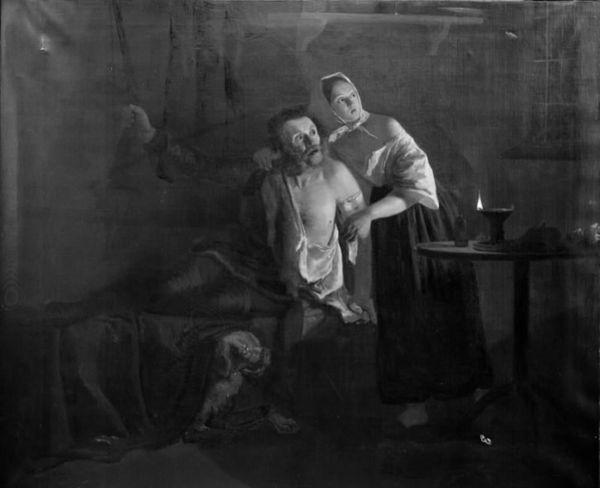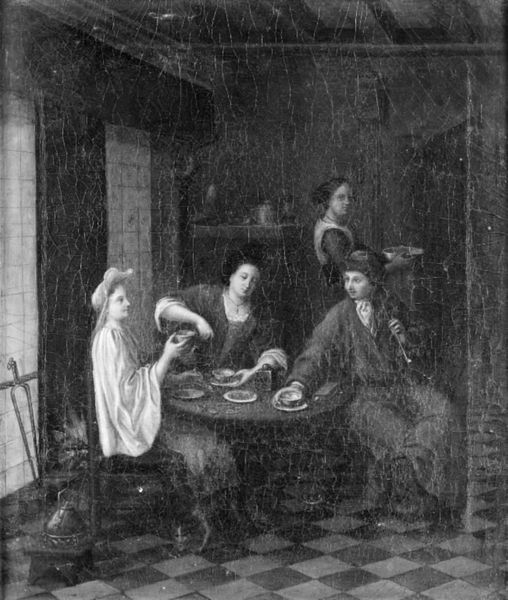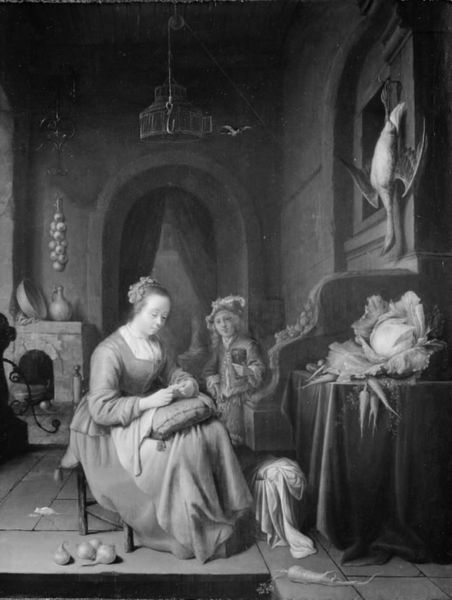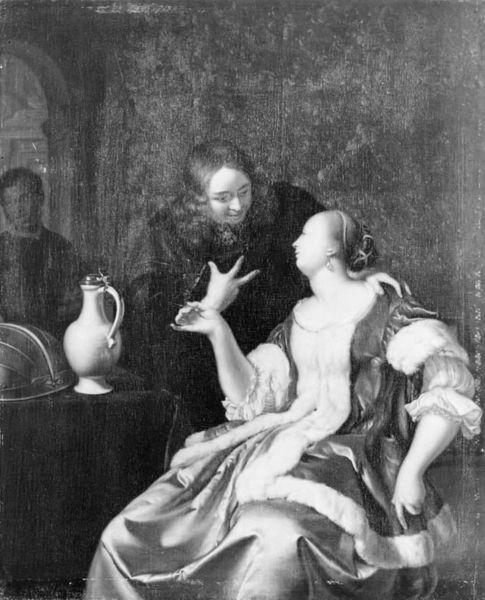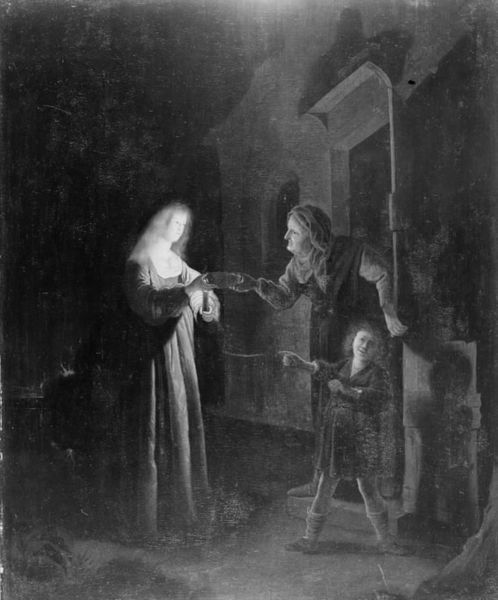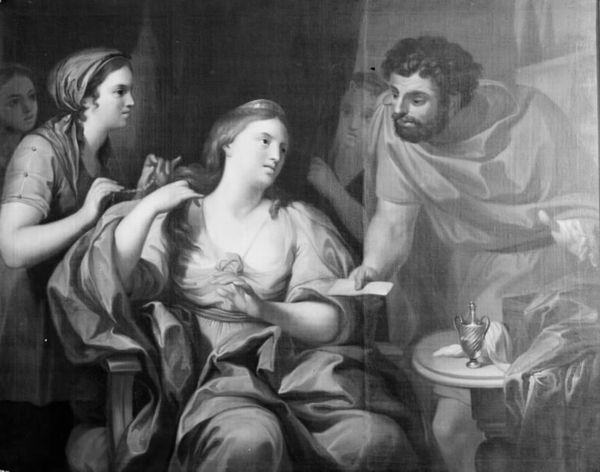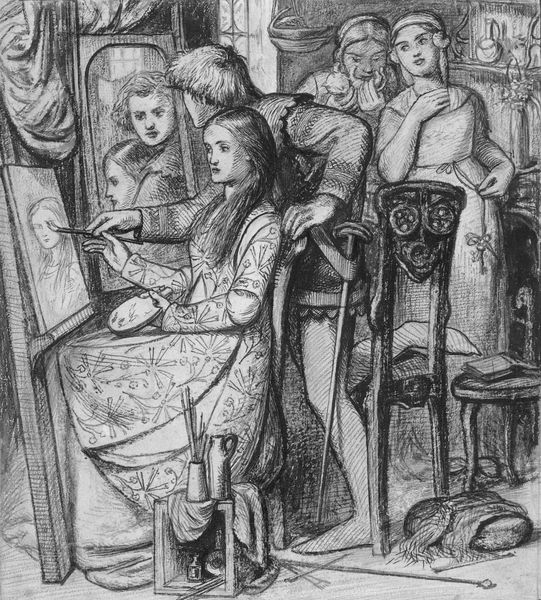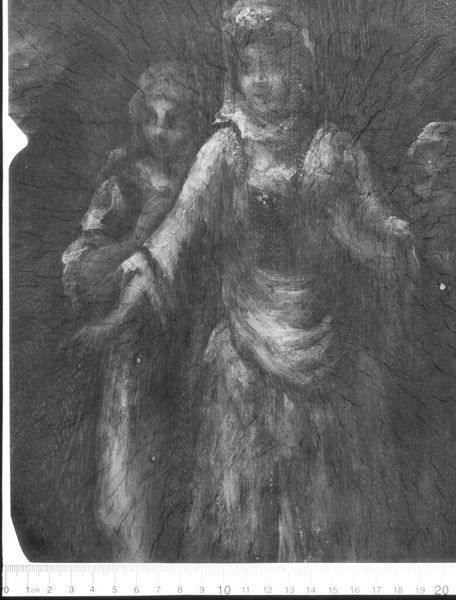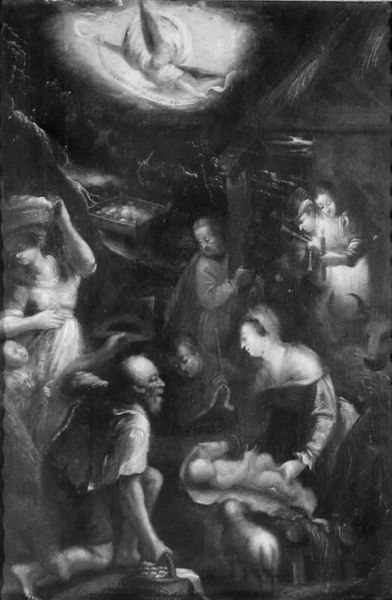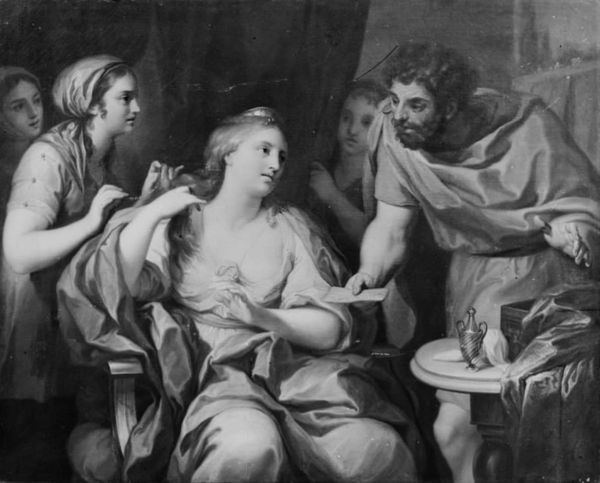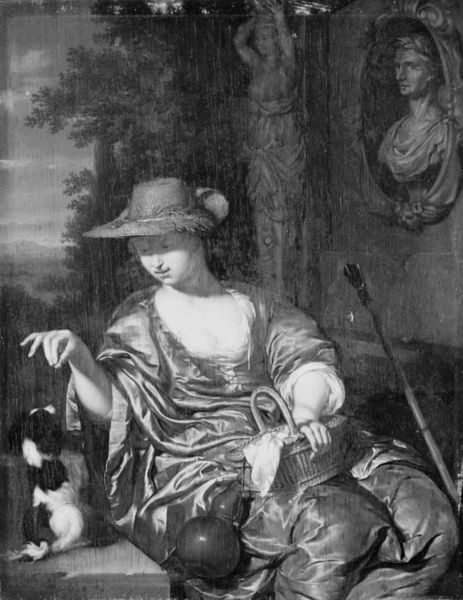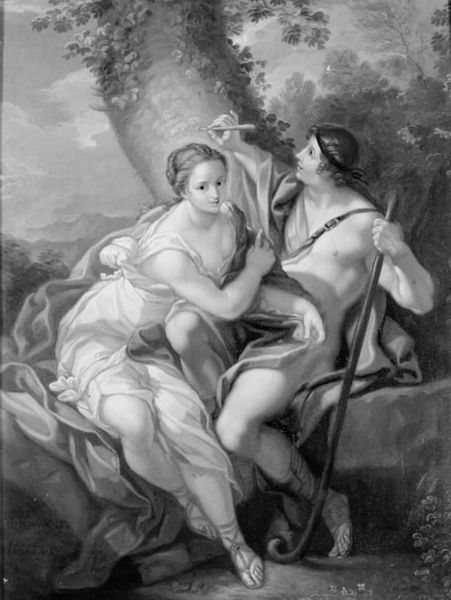
Et ungt fruentimmer i blå kjole, samtaler med en gammel mand 1657 - 1715
0:00
0:00
painting, canvas
#
baroque
#
portrait image
#
painting
#
canvas
#
black and white
#
genre-painting
#
monochrome
#
front view
#
monochrome
Dimensions: 53 cm (height) x 67 cm (width) (Netto)
Curator: Here we have "A Young Woman in a Blue Dress Conversing with an Old Man," a canvas piece created sometime between 1657 and 1715, attributed to Jacob d'Agar. Editor: The monochrome palette immediately strikes me; it lends the scene an austere, almost somber quality. The contrast between the youthfulness of the woman and the obvious age of the man also contributes to the dramatic tension. Curator: Let's consider the materials. Canvas as a support suggests a move away from panel painting, indicative of evolving artistic production. While the attribution remains somewhat tentative, it’s reasonable to presume access to pigments and studio assistance if created by d'Agar himself. The texture is smooth, and the monochrome, you note, suggests perhaps an underpainting meant for glazing that was never completed. Editor: Absolutely. And regarding the social context, one has to wonder about the dynamic between the two figures. Is it one of mentor and student, father and daughter, or something else entirely? The young woman, though passively posed, holds herself with an undeniable strength of character, which conflicts against the perceived social roles available to women at this period. Curator: Indeed. The painting could be examined as evidence of the early genre paintings so popular at the time, exploring social interactions, maybe illustrating a moment in the societal interactions between different generations, something to hang in an office or house, showing moral tales. Editor: Right, perhaps an exploration of the gaze, particularly if we read the old man's expression as contemplative. How do patriarchal structures inform the dynamics of seeing and being seen? How might the artist subtly critique or reinforce prevailing societal norms? Curator: And one can ask about what might the materials be intended to represent: the clothes and fabric might tell a different class history. Perhaps, though it is rendered without color today, it was initially planned as a display of fabrics themselves and all the craft necessary for their creation. Editor: It gives you pause to reflect on how we engage with representations of power, gender, and knowledge transmission and what those things would even have looked like at the time it was painted. It definitely encourages a deeper probing into the untold stories and perspectives hidden beneath the surface of formal portraiture. Curator: Seeing the work in its potential form as Baroque craft makes one consider all the material skills required to execute such a vision: canvas stretching, pigment mixing, glazing skills, which also tell stories of their own time. Editor: Right. Even with limited chromatic detail, we get a powerful glimpse into historical tensions—of age, of power, and expectation and even an expectation regarding materials used in this day.
Comments
No comments
Be the first to comment and join the conversation on the ultimate creative platform.
